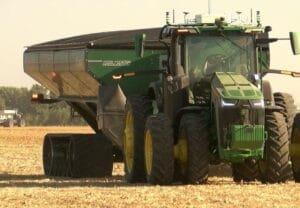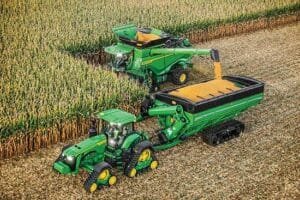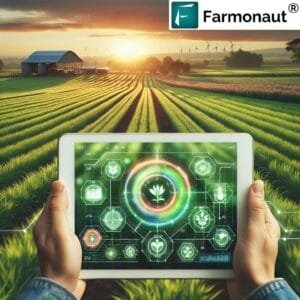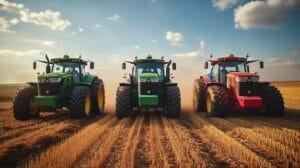The agricultural landscape is undergoing a dramatic transformation as autonomous tractors emerge as the latest innovation in smart farming technology. These self-driving machines, equipped with GPS guidance systems, sensors, and artificial intelligence, are revolutionizing customary farming practices. While conventional tractors require constant human operation, autonomous models can navigate fields independently, perform precise tasks, and operate around the clock. This technological shift represents a notable step toward the automation of agriculture, promising increased efficiency, reduced labor costs, and improved crop yields. Agricultural innovation has reached new heights with the integration of autonomous technology in farming equipment. These self-driving machines are revolutionizing traditional farming practices, offering precision, efficiency, and increased productivity across vast agricultural landscapes.
Modern autonomous tractors utilize advanced GPS systems, sensors, and artificial intelligence to navigate fields with remarkable accuracy. These complex vehicles can operate 24/7, performing tasks such as plowing, planting, and harvesting with minimal human intervention. The technology enables sub-inch accuracy in field operations, ensuring optimal use of resources and reducing waste.The heart of these machines lies in their complex sensor arrays, which include LiDAR, cameras, and radar systems. These components work in harmony to create real-time field maps,detect obstacles,and make instant adjustments to maintain perfect routing patterns. The onboard computers process this data continuously, making decisions based on pre-programmed parameters and real-time field conditions.
Farmers can monitor and control these vehicles remotely through mobile applications or desktop interfaces.The software platforms provide detailed analytics, including coverage maps, efficiency reports, and maintenance alerts. This level of connectivity allows for immediate response to changing weather conditions or equipment issues.
These technological marvels bring significant economic benefits to farming operations. Labor costs decrease substantially, while operational hours extend beyond traditional working shifts. The precision of autonomous systems reduces overlap in field operations, saving fuel and minimizing soil compaction. Additionally, the consistent operation patterns optimize seed placement, fertilizer application, and harvest timing.
Environmental benefits are equally noteworthy. The precise application of agricultural inputs reduces chemical usage and minimizes environmental impact. These machines can also collect valuable data about soil conditions, crop health, and weather patterns, enabling more sustainable farming practices.
Safety features are paramount in autonomous tractor design. Multiple redundant systems ensure safe operation, including emergency shutdown protocols and obstacle avoidance capabilities.The machines can detect unexpected objects or people in their path and respond appropriately, maintaining a secure working environment.
The integration of autonomous tractors into existing farm operations requires careful planning and infrastructure growth. Farms need reliable internet connectivity, base stations for GPS correction signals, and trained personnel to manage the technology. Initial investment costs are significant, but the long-term benefits often justify the expenditure.
As this technology continues to evolve, manufacturers are developing more sophisticated features. Machine learning algorithms improve performance over time, adapting to specific field conditions and operational patterns. Future developments may include swarm technology, allowing multiple autonomous vehicles to work together seamlessly across large agricultural areas.
The agricultural industry stands at the cusp of a new era, where autonomous machinery becomes the standard rather than the exception. This transformation promises to address growing food production demands while maintaining sustainable farming practices.









